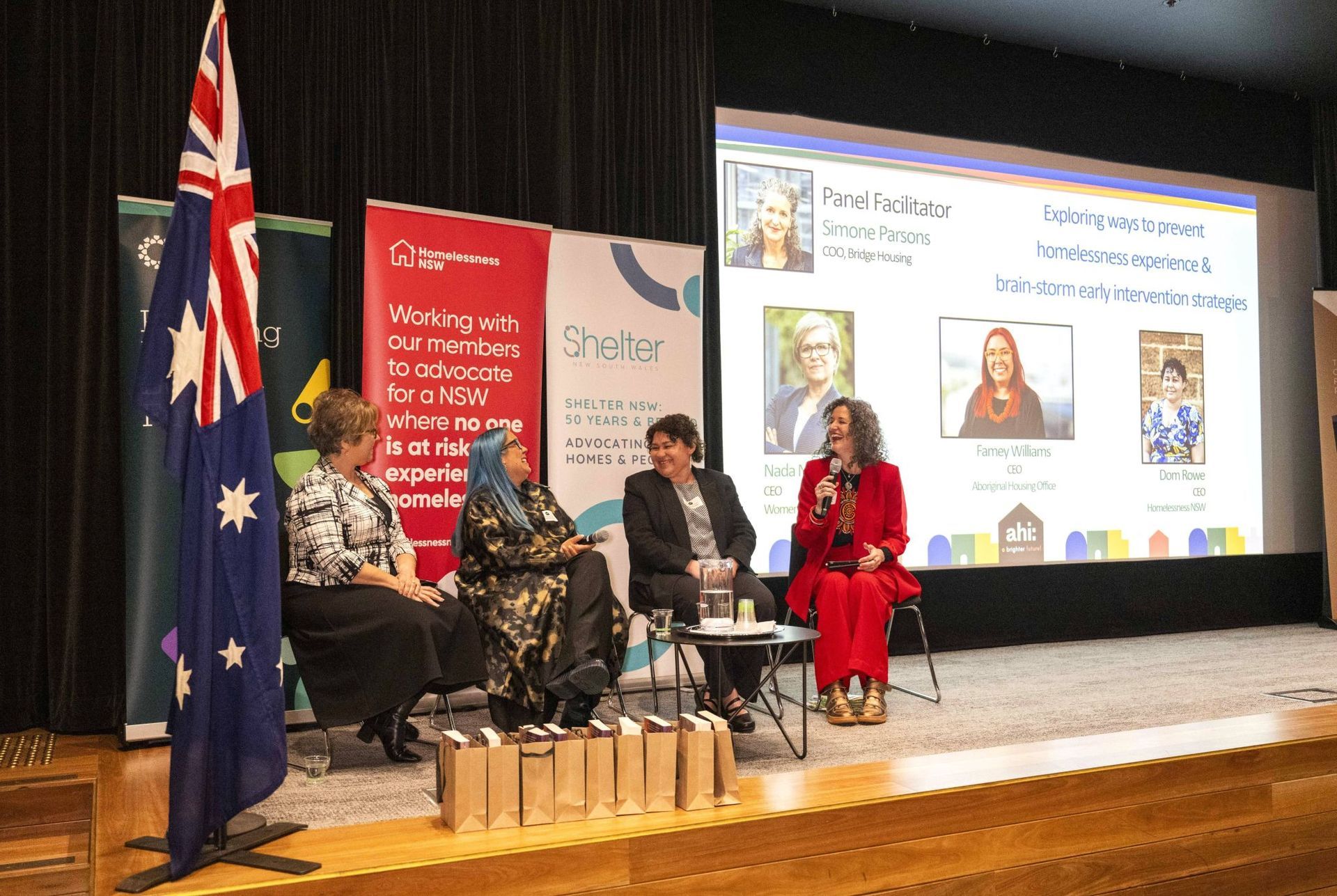Upon returning from the Building 4.0 CRC Study Tour in San Francisco on Housing Construction, Julie Saunders from Urbis shares her insights.
In the realm of construction, innovation is the cornerstone of progress. As urbanisation surges and populations expand, the demand for efficient, sustainable and affordable housing solutions intensifies.
The Building 4.0 CRC (Construction Research Centre) Study Tour to San Francisco in 2024 provided a platform for industry leaders, researchers and policy makers to delve into the heart of innovation within the housing construction sector.
This article outlines the key insights garnered from this transformative experience, exploring groundbreaking technologies, novel approaches and paradigm shifts reshaping the landscape of housing construction.
Embracing sustainable materials and practices
A frontrunner of sustainability and technology, San Francisco showcased a myriad of initiatives aimed at reducing the ecological footprint of housing construction. From reclaimed wood and recycled steel to innovative materials like hempcrete, the emphasis on sustainable sourcing and low-impact materials was evident. Furthermore, the integration of green building practices, such as passive design, solar panel installations, and water recycling systems, underscored a holistic approach towards environmentally conscious construction.
"The visit to Google's new mass timber building was a highlight. The site is now adorned by Mothership... that pays homage to the original Atari headquarters."
The visit to Google's new mass timber building was a highlight. The site is now adorned by Mothership, a two-ton sculpture by Mike Whiting that pays homage to the original Atari headquarters that preceded the new office. The project is one of the first in the Bay Area to use the burgeoning sustainable construction material. A visit to their geothermal power generation plant also crystallises the explicit intent to be carbon neutral by 2030 within the Google precincts – something we need to embed in our city planning policy frameworks in Australia and Aotearoa New Zealand!
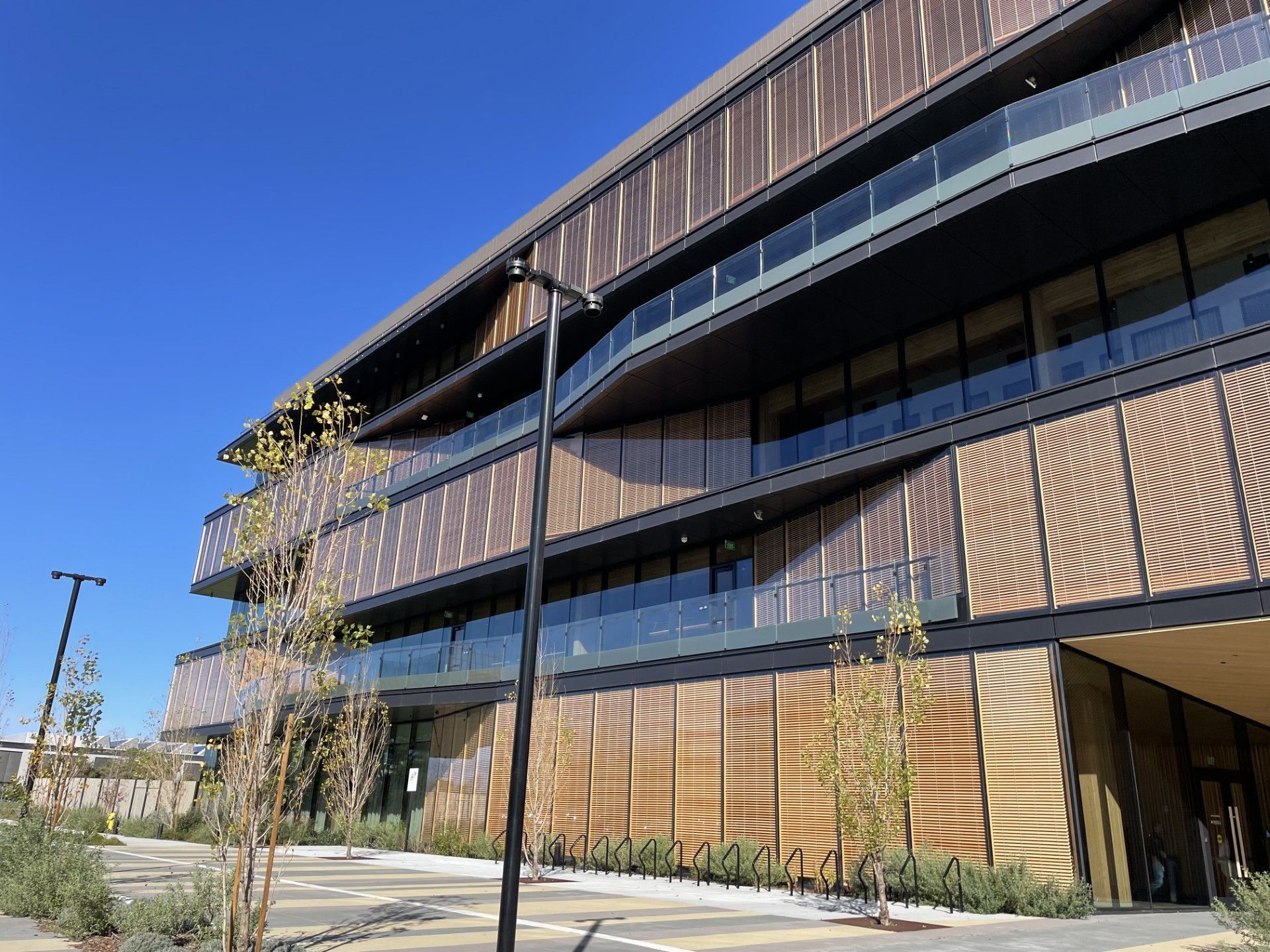
Google's mass timber building
The advent of advanced design software and digital modelling tools has revolutionised the way we conceptualise and execute housing projects. San Francisco's burgeoning trend towards modular and prefabricated construction exemplified this paradigm shift.
By leveraging off-site fabrication and assembly, construction timelines are significantly compressed, which reduces costs and minimises on-site disruptions. Moreover, the flexibility afforded by modular design allows for customisable solutions tailored to diverse needs and spatial constraints.
"Visiting Factory_OS demonstrated the transferability of the tech thinking into trialling innovative construction... This workforce had not come from a previous construction background."
This prefabrication revolution heralds a new era of efficiency and scalability in housing construction, promising rapid deployment of high-quality dwellings to meet the evolving demands of urbanisation. Visiting Factory_OS – backed by the big tech companies such as Autodesk, Google and Facebook – demonstrated the transferability of the tech thinking into trialling innovative practices in different modes of construction. It was interesting to understand that the profile of this workforce had not come from a previous construction background.
The transferability of this approach to the Australian and Aotearoa New Zealand context is an opportunity to create a hub-and-spoke style production functionality that can service our vast geography with greater efficiency and certainty, particularly to regional economies that struggle with both certainty in supply and affordability.
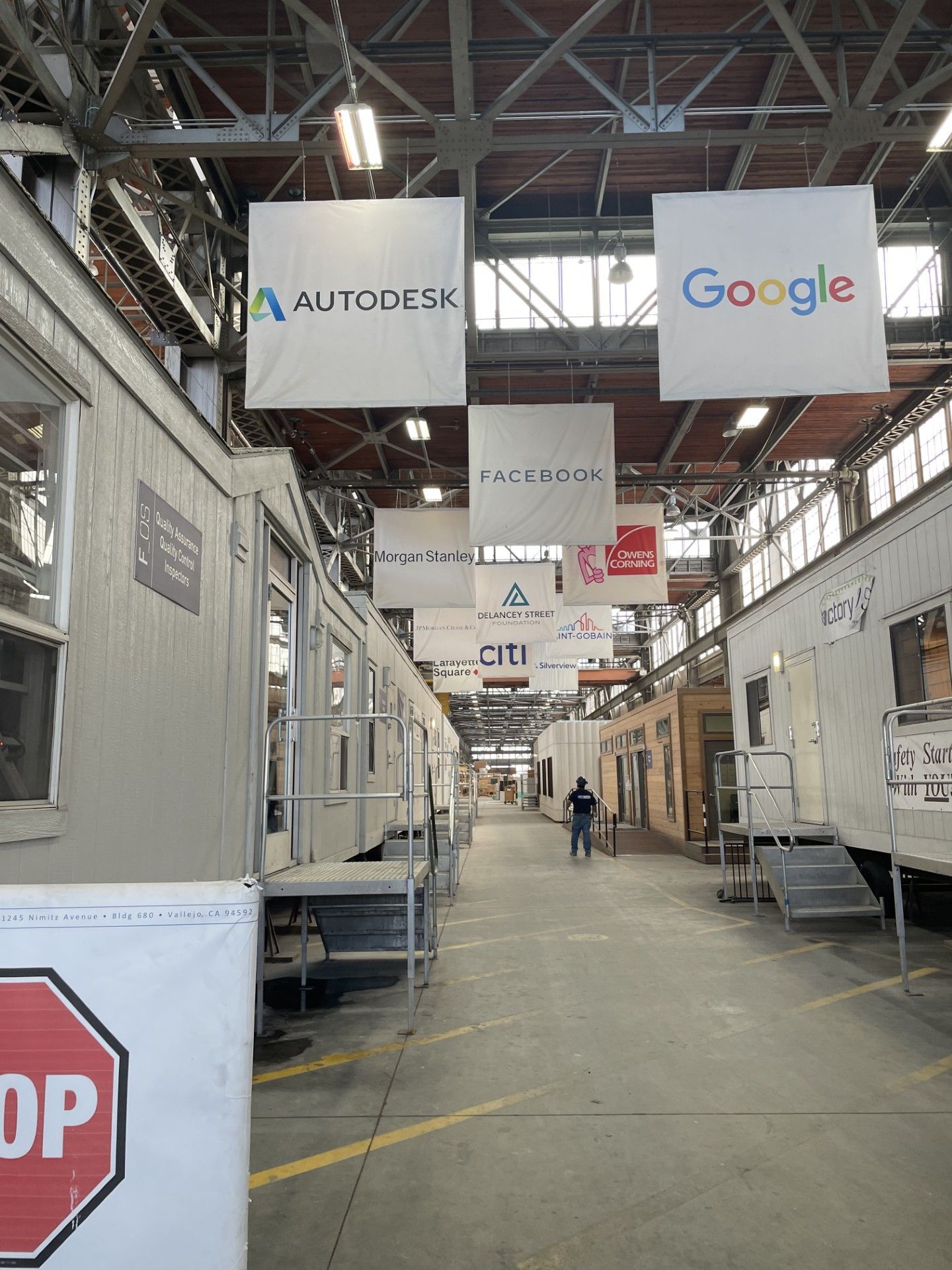
The assembly Line at Factory_OS
Harnessing the power of robotics and automation
Automation and robotics are reshaping the labour-intensive landscape of construction, offering unprecedented precision, speed and safety in building processes. San Francisco's showcase of robotic bricklaying, 3D printing and autonomous construction vehicles underscored the transformative potential of these technologies.
"By augmenting human labour with robotic counterparts, tasks ranging from foundation laying to interior finishing can be expedited with unparalleled efficiency."
By augmenting human labour with robotic counterparts, tasks ranging from foundation laying to interior finishing can be expedited with unparalleled efficiency. Additionally, the integration of AI-driven analytics facilitates predictive maintenance and real-time monitoring, ensuring optimal performance and longevity of housing infrastructure.
Attending the Industrialised Construction Forum at Stanford University was an eye-opening experience that spotlighted the latest thinking and frontier development in this space, particularly the outline of three new potential business models: 1. Spinoff factory from Tier 1 contractor (e.g. Skender), 2. Vertical integration (e.g. Goldbeck) and 3. Digital system integration (e.g. Modulous) that focused on the research work of Hall, Lessing and Whyte.
"The opportunity of transforming the smarts of the tech revolution into the construction industry is obvious."
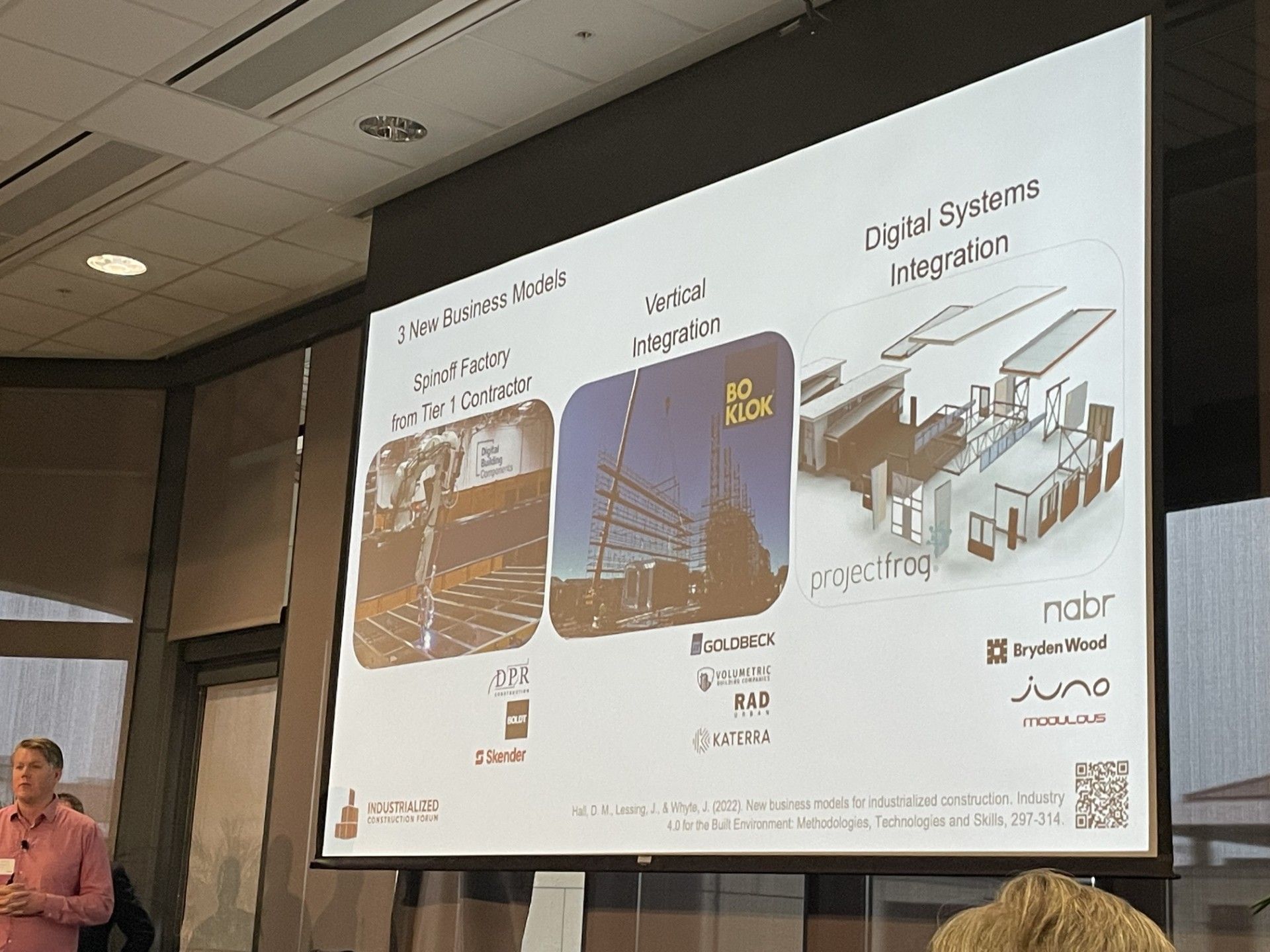
The Industrialised Construction Forum at Stanford University
Fostering collaboration and knowledge exchange
The 4.0 CRC Study Tour served as a catalyst for cross-sector collaboration and knowledge exchange. San Francisco's vibrant ecosystem of innovation hubs, research institutions and startup incubators provided fertile ground for interdisciplinary dialogue and partnership formation.
By cultivating a culture of open innovation and shared learning, stakeholders are empowered to co-create transformative solutions that transcend conventional boundaries. Additionally, the establishment of collaborative platforms and funding mechanisms accelerates the translation of research findings into tangible applications, driving continuous improvement and innovation in housing construction.
"The Master Class at Stanford University bought the venture capitalists into the room."
The Master Class at Stanford University bought the venture capitalists into the room. Plug and Play, Brick and Mortar and Blackhorn Ventures talked about their investment risk profile and what they look for in a startup. Predominantly private equity and philanthropically backed, their appetite for risk and failure is high. In fact, some outlined it as a mandate that you had tried and failed as a startup as a key criterion for investment.
I could not see a parallel in the Australian/New Zealand context – and this was the most obvious difference between Australasia and the US.
Addressing equity and affordability challenges
Amid the backdrop of soaring housing costs and widening socioeconomic disparities, San Francisco grapples with the urgent imperative of housing affordability and inclusivity. The Building 4.0 CRC Study Tour narrowed in on innovative approaches aimed at addressing these pressing challenges.
From community land trusts and cooperative housing models to regulatory reforms incentivising affordable housing development, a multifaceted strategy is essential to ensuring equitable access to safe and dignified housing for all. Leveraging technology to streamline permitting processes, optimise land use and facilitate community engagement can enhance efficiency and transparency in housing development. Ultimately, this lowers barriers to entry and fosters inclusive growth.
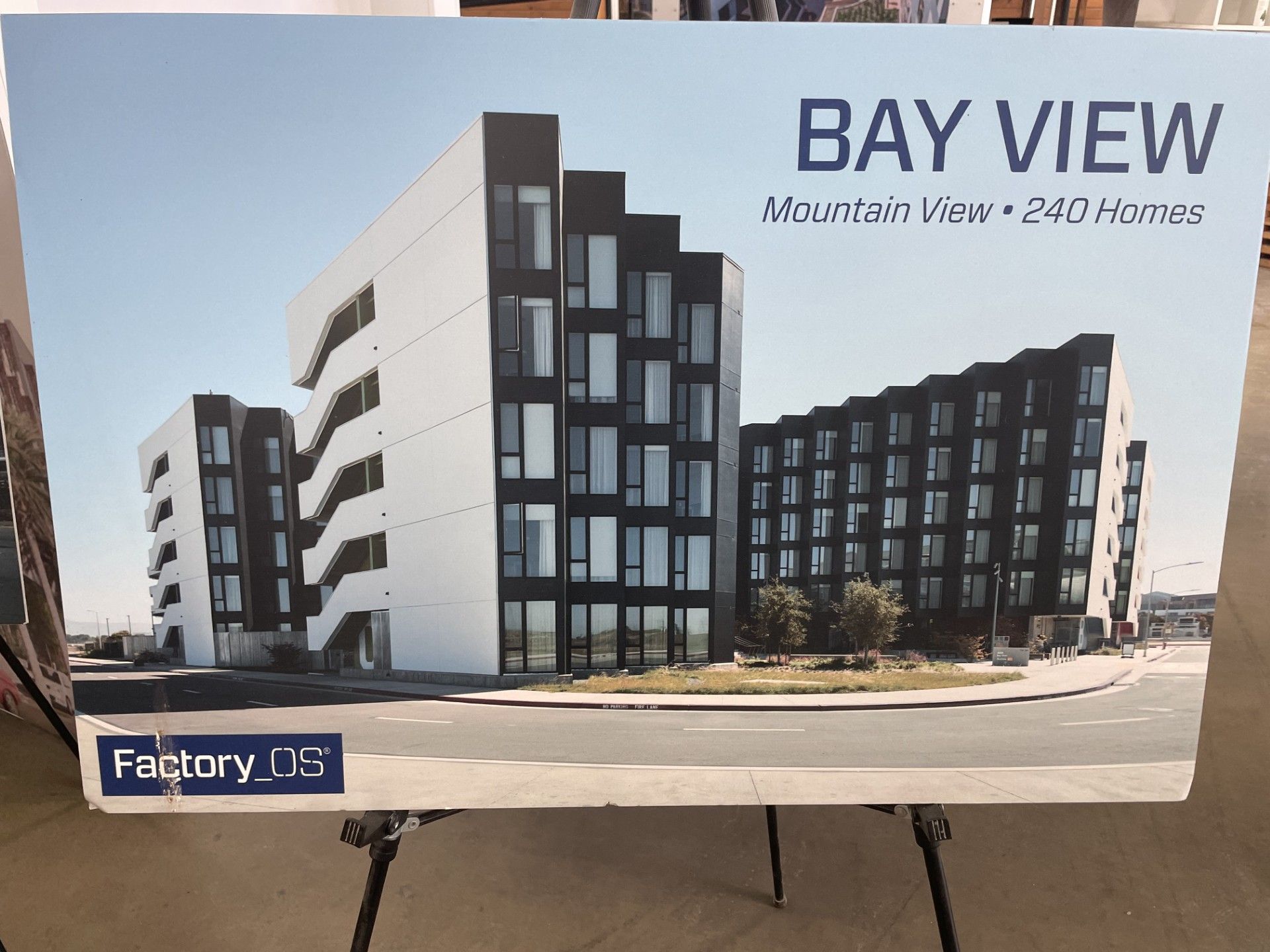
Modular Affordable Housing Example San Fransisco by Factory_OS
The Building 4.0 CRC Study Tour to San Francisco offered a glimpse into the future of housing construction, characterised by sustainability, innovation and inclusivity.
By embracing cutting-edge technologies, reimagining design paradigms and nurturing collaborative ecosystems, stakeholders are poised to usher in a new era of transformative change in the built environment. And, as we navigate the complexities of urbanisation and environmental stewardship, the lessons learned from San Francisco's innovative ecosystem serve as invaluable guideposts for shaping a more resilient, equitable and sustainable future in housing construction.
Australia and Aotearoa New Zealand have strong governance and great construction regulation. We just need to get a greater appetite for innovation. That might be the panacea we need.
Share This Article
Other articles you may like
